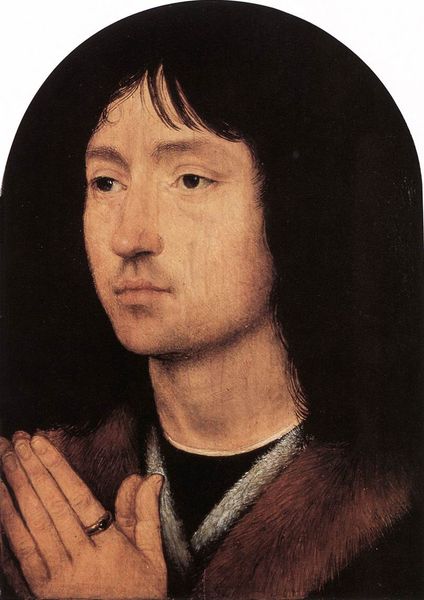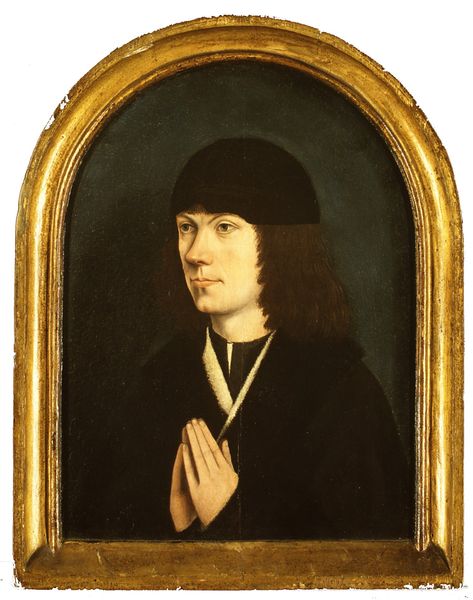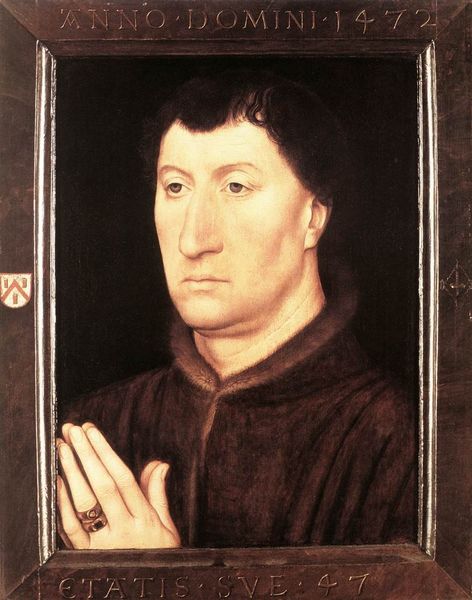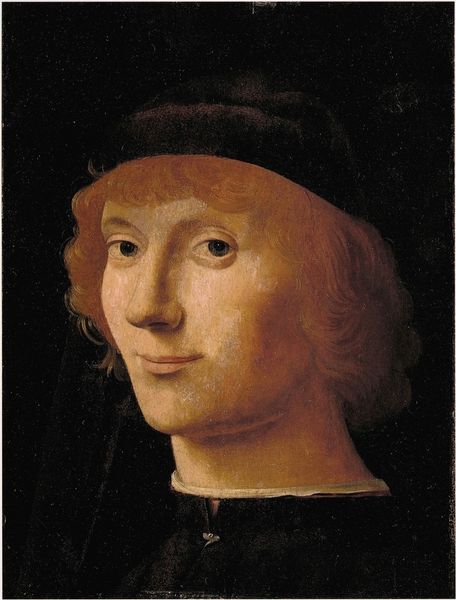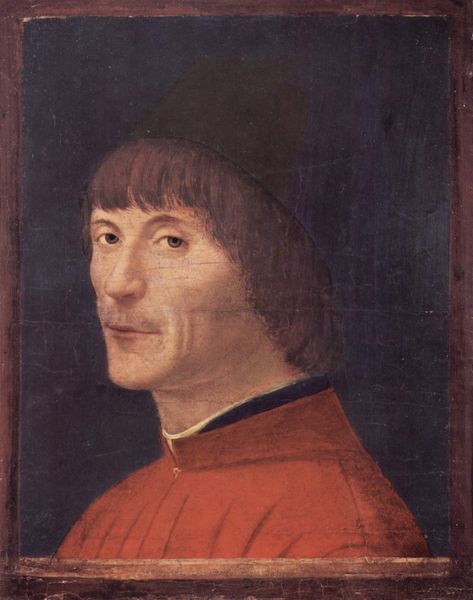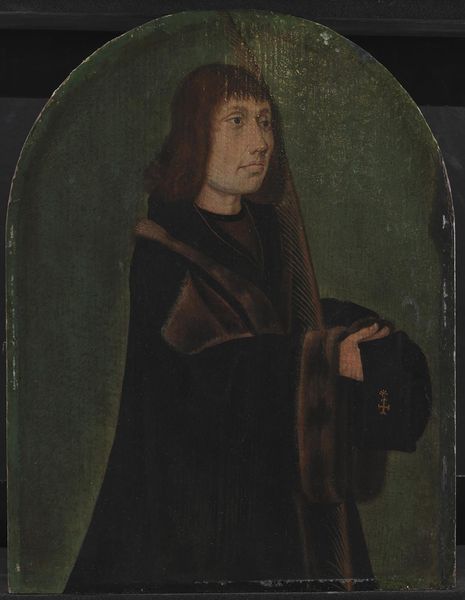
painting, oil-paint
#
portrait
#
painting
#
oil-paint
#
northern-renaissance
#
early-renaissance
#
realism
Dimensions: 32 x 27 cm
Copyright: Public domain
Curator: I’m struck by the palpable weight of time emanating from this piece. Editor: Absolutely, that dark ground gives such gravity. I want to know what sort of wooden panel it’s painted on, the kind of pigments Memling ground up… Curator: We're looking at Hans Memling's "Portrait of a Man," crafted around 1480. Beyond the artist, it speaks volumes about the conventions of the Northern Renaissance. Notice the subject’s reserved demeanor. The somber attire directs our gaze to his face and hands—the locus of his identity. Editor: That heavy black tunic—almost completely obscures any detail in the fabric. It's as if the painting is drawing all light and materiality inward, so that any glint is amplified on his necklace and hand. It must have been deliberately painted like that, so that one only sees the face, class status, and labour represented together. Curator: Indeed. The elongated fingers gently clasping what seems to be a pendant suggest piety or a particular office. It could even be a memento mori, symbolizing awareness of mortality. His slightly averted gaze may connote humility, a vital virtue during the period. It may express worldliness and interiority: a private emotional space. Editor: I wonder, though, about the socioeconomic conditions required to produce something so focused. Look at his fingernails! Someone else labored so that this man didn't need to coarsen his hands with work. Memling and his workshop likely had other assistants preparing the pigments. It is about showing power with that intense, almost draining blackness and those soft hands. Curator: Precisely. And considering the era's spiritual anxieties, the stark simplicity here could be an assertion of the subject’s moral purity—as demonstrated by his controlled, refined materialism. Editor: Ultimately, it reveals not only Memling’s talent but the values and class consciousness embedded in artistic production itself. Curator: Agreed. Its layers of symbolic and material import offers pathways into a rich historical encounter.
Comments
No comments
Be the first to comment and join the conversation on the ultimate creative platform.
